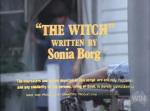AustLit
Latest Issues
AbstractHistoryArchive Description
The script held in the Crawford Collection in the AFI Research Collection contains the following character notes (excluding regular characters):
'MRS. FOLEY: In her mid-forties. She looks frail and worn and ordinary. She has had a hard life, and there is no relief in sight. The one thing that helps her overcome the drabness of her existence is her firm conviction that she has the gift of clairvoyance and telepathy. She feels 'selected' 'chosen'. She believes she loves her invalid daughter, but subconsciously she rejects her, and blames her for much of her own misery.
'SIMONE FOLEY: Twenty years old. Confined to a wheelchair. To some extent one could say she is a telepathist: she senses her mother's rejection. Cut off from all outside contact for years, and exposed to her mother's personality, she is on the verge of a mental breakdown.
'RAPLH DONALDSON: About sixty. Well-to-do beef farmer. At first sight he appears a jovial magnanimous bloke, always ready to lend a hand. Underneath it all he is intolerant and superstitious. Though he at first maintains Mrs. Foley has no supernatural powers, he actually believes she does possess them. He is afraid of appearing ridiculous.
'TONY WALLACE: Matlock Brigade captain.'
Notes
-
This entry has been compiled from archival research in the Crawford Collection (AFI Research Collection), undertaken by Dr Catriona Mills under the auspices of the 2012 AFI Research Collection (AFIRC) Research Fellowship: see The Writer in Australian Television History.





